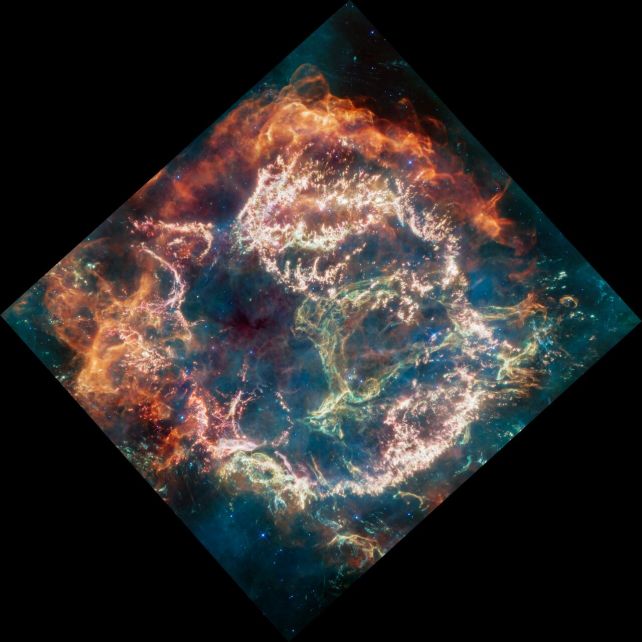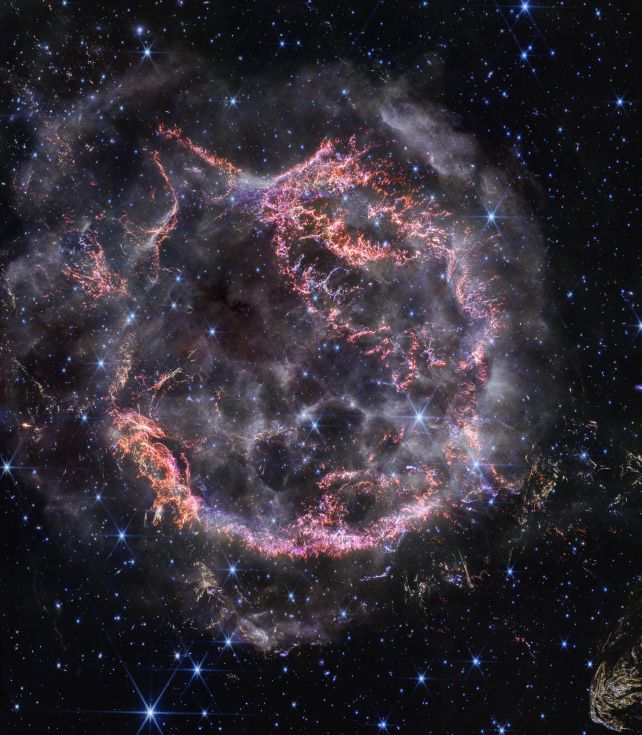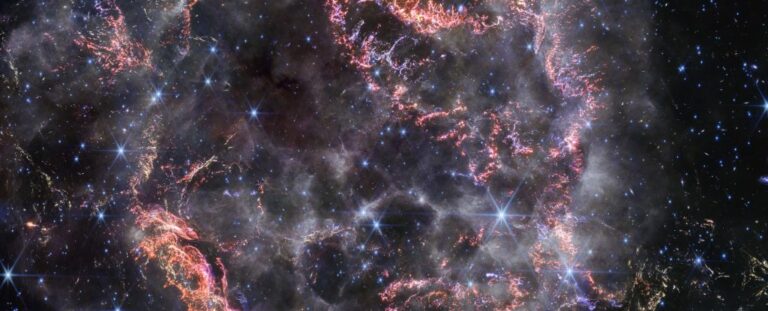Behold Cassiopeia A: JWST Presents an Unprecedented View of a Supernova Remnant
A fresh perspective has been gained on one of the most renowned exploded stars within the Milky Way. The James Webb Space Telescope has directed its attention towards Cassiopeia A, an awe-inspiring and intricate cloud of hot gas that continues to expand from a star that underwent a supernova event in the 1670s. By examining the heated gas wisps and filaments through infrared scans, an astonishing level of new intricacy has been unveiled.
Interestingly, this is not the first time that the telescope has focused on this famous supernova. In April 2023, the JWST conducted observations in the mid-infrared wavelength range using its MIRI instrument.
However, this time, the orbiting observatory employed its NIRCam instrument to observe in the near-infrared spectrum, and the disparities between the two images have left scientists perplexed.
Situated a mere 11,000 light-years away from the Solar System, Cassiopeia A is one of the most extensively studied objects in the galaxy. Historical records from the late 17th century indicate that it was observed by numerous astronomers, but the official documentation of the supernova remnant itself did not occur until a considerable time later, in 1948.

Nonetheless, astronomers have been captivated by it ever since, as it presents a rare opportunity to examine the progression of a exploded star as its fragments expand into space at incredible speeds.
Given that the JWST is the most advanced space telescope ever constructed, it would be peculiar if astronomers did not utilize it to observe Cas A.
The recent near-infrared image appears more transient compared to previous observations in different wavelengths, which aids scientists in studying the dynamics of the remaining debris. Additionally, there is one particularly remarkable new element. Situated in the bottom right corner of the image is a striped mass that scientists have dubbed Baby Cas A, due to its resemblance to Cas A’s offspring.
Although it may seem to be in close proximity to the supernova remnant, it is actually approximately 170 light-years further away. Furthermore, it is not a supernova itself – it is the light emitted by Cas A that has traversed through space and is now illuminating a distant cluster of dust.
This occurrence is referred to as a light echo, and a few instances of it have been captured in the recent image.
The explosion’s inner shell consists of ropy twists of bright pinky-orange, composed of gas and dust containing elements like sulfur, oxygen, argon, and neon. These elements will eventually become part of newly forming stars.
According to Purdue University astronomer Danny Milisavljevic, NIRCam’s resolution allows us to witness the shattered remains of the dying star, resembling tiny glass shards. This newfound ability provides transformative insights into the star’s explosive demise, a remarkable development after years of studying Cas A.
The outer shell of the remnant appears smoky and is expanding into interstellar space. While it emits bright light in mid-infrared wavelengths, it remains too cool to illuminate in near-infrared. The white light observed in the image is a result of synchrotron radiation, where electrons spiral around magnetic field lines, generating the emission.

The origin of a vibrant and green-colored patch of light in the mid-infrared region, located in the center-right of the bubble, which had perplexed scientists, has now been unveiled. In the recent NIRCam image, that particular area appears to be adorned with what appears to be perforations, encircled by white and purple hues that signify ionized gas.
Presently, astronomers posit that this amalgamation of light is a result of the expanding ejecta from the supernova catching up to and penetrating the material expelled by the star prior to its explosion.
This is merely the beginning of the extensive knowledge we will acquire regarding Cas A. It serves as an extraordinary laboratory for comprehending these intricate processes, and its evolution promises to captivate us even further.
While we await these profound insights, you can delve into the image’s magnificence on the ESA Webb website.
This article is republished from sciencealert under a Creative Commons license. Read the original article.
Do not forget to share your opinion with us to provide you with the best posts !




0 Comments